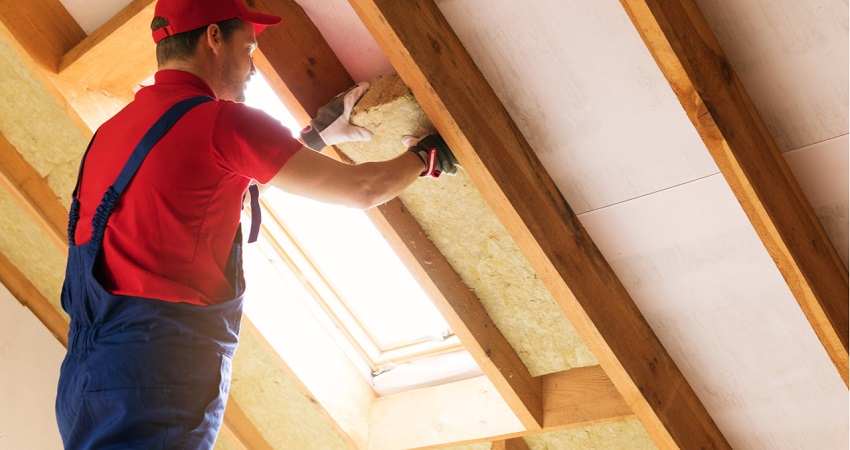Are you living in an old house that seems to let in cold drafts during the winter and allows heat to seep out in the summer? Insulating your walls is a crucial step in improving your home’s energy efficiency and creating a more comfortable living environment. In this article, we will explore the best way to insulate walls in an old house, helping you make informed decisions to enhance insulation and reduce energy costs.
Older homes often lack proper insulation, leading to uncomfortable indoor temperatures and high energy bills. Insulating the walls of your old house can significantly improve its energy efficiency, making it warmer in the winter and cooler in the summer. Let’s explore the best methods to insulate your walls effectively.
Assessing the Existing Insulation
Before proceeding with any insulation work, it’s essential to assess the current insulation in your walls. Older houses may have inadequate or deteriorated insulation, requiring an upgrade or replacement. Hire a professional insulation contractor to inspect your walls and provide recommendations based on their findings.
Insulation Options
Several insulation materials are suitable for insulating walls in an old house. Let’s explore some of the most popular choices:
Spray Foam Insulation
Spray foam insulation is a versatile option that expands upon application, filling gaps and crevices in the wall cavities effectively. It provides an excellent air barrier, reduces noise transmission, and has a high R-value, indicating its insulation performance. However, professional installation is recommended for optimal results.
Fiberglass Insulation
Fiberglass insulation consists of fine glass fibers and is commonly used in residential construction. It comes in batts or rolls and is relatively easy to install. Fiberglass insulation is cost-effective, offers good thermal performance, and can be used for exterior and interior walls.
Cellulose Insulation
Cellulose insulation is made from recycled paper treated with fire-retardant chemicals. It can be blown into wall cavities, providing excellent thermal and sound insulation properties. Cellulose insulation is eco-friendly, has a high R-value, and effectively fills gaps and voids.
Reflective Insulation
Reflective insulation is composed of aluminum foil laminated onto various backings. It works by reflecting radiant heat, helping to maintain comfortable indoor temperatures. Reflective insulation is often used with other insulation materials to enhance overall performance.
Insulating Exterior Walls
To insulate exterior walls in an old house, you have two primary options: insulating from the outside or the inside.
When insulating from the outside, a popular method is to install rigid foam insulation boards. These boards are attached to the exterior walls, providing a continuous insulation layer. It’s crucial to ensure proper sealing and weatherproofing when using this method.
Insulating from the inside involves adding insulation material to the interior wall surface. This can be done by installing fiberglass batts or blowing cellulose insulation into the wall cavities. It’s essential to address any moisture or mold issues before adding interior insulation.
Insulating Interior Walls
Insulating interior walls in an old house is a bit different from exterior walls. Insulating every interior wall is generally unnecessary, but you may want to consider insulating rooms where noise reduction or thermal separation is desired.
One option is to use fiberglass batts inserted between the studs of the interior walls. This helps reduce sound transmission and provides some thermal insulation. Alternatively, you can choose soundproofing insulation materials specifically designed for interior walls.
Insulating Attics and Crawl Spaces
In addition to insulating the walls, it’s crucial to address insulation in attics and crawl spaces. These areas are prone to energy loss and can significantly impact the overall energy efficiency of your home.
For attics, consider adding insulation in the form of blown-in cellulose or fiberglass batts. Ensure proper ventilation to prevent moisture buildup.
Crawl spaces can be insulated using various methods, such as installing vapor barriers, rigid foam insulation, or spray foam insulation. Consult a professional to determine the best approach for your specific crawl space conditions.
Insulation Cost Considerations
The cost of insulating walls in an old house can vary depending on factors such as the size of the house, type of insulation material, and whether you choose professional installation or opt for a DIY approach.
On average, the cost of insulating exterior walls ranges from $1.50 to $3 per square foot, while interior wall insulation may cost between $0.50 and $1.50 per square foot. It’s essential to obtain quotes from reputable insulation contractors to get accurate cost estimates.
Hiring Professionals vs. DIY
Deciding whether to hire professionals or tackle the insulation project yourself depends on your comfort level, available time, and job complexity. While DIY insulation can save money, it’s crucial to ensure proper installation to achieve optimal results.
If you hire professionals, look for licensed and experienced insulation contractors who specialize in working with old houses. They can provide expert advice, recommend suitable insulation materials, and ensure the work is done correctly.
Common Mistakes to Avoid
When insulating walls in an old house, it’s important to avoid common mistakes that can compromise the effectiveness of the insulation. Some key mistakes to avoid include:
- Neglecting to seal air leaks before insulation
- Using the wrong type or insufficient insulation material
- Ignoring moisture or mold issues
- Failing to insulate attics and crawl spaces
By being aware of these mistakes and taking the necessary precautions, you can ensure that your insulation efforts yield the desired results.
Benefits of Proper Wall Insulation
Properly insulating the walls in an old house offers numerous benefits, including:
- Improved energy efficiency and reduced utility bills
- Enhanced indoor comfort with more consistent temperatures
- Reduced noise transmission from outside or between rooms
- Increased resale value of the property
- Environmentally friendly by reducing carbon footprint
Investing in wall insulation not only improves the quality of your living space but also provides long-term cost savings and environmental benefits.
Conclusion
Insulating the walls of an old house is a valuable investment that improves energy efficiency, increases comfort, and reduces utility costs. By understanding the different insulation options available and considering factors such as cost, insulation materials, and professional assistance, you can make informed decisions that suit your specific needs.
Remember, proper installation and addressing any existing issues are essential for optimal insulation performance. Take the necessary steps to insulate your old house’s walls and create a more comfortable and energy-efficient living environment.
FAQs
- Can I insulate my old house’s walls from the inside?
Yes, you can insulate the interior walls of your old house by installing insulation materials such as fiberglass batts or soundproofing insulation designed for interior walls.
- How much does it cost to insulate the walls of an old house?
The cost of insulating walls in an old house varies depending on factors such as the size of the house, type of insulation material, and professional installation. On average, exterior wall insulation costs between $1.50 and $3 per square foot, while interior wall insulation ranges from $0.50 to $1.50 per square foot.
- Is it necessary to insulate every interior wall in an old house?
Insulating every interior wall in an old house is not necessary. You may want to focus on insulating rooms where noise reduction or thermal separation is desired.
- Can I install insulation in my old house’s crawl space?
Yes, you can insulate your old house’s crawl space by installing vapor barriers, rigid foam insulation, or spray foam insulation. Consult a professional to determine the most suitable approach for your crawl space conditions.
- How does proper wall insulation benefit an old house?
Proper wall insulation in an old house offers benefits such as improved energy efficiency, enhanced indoor comfort, reduced noise transmission, increased property value, and reduced carbon footprint.





